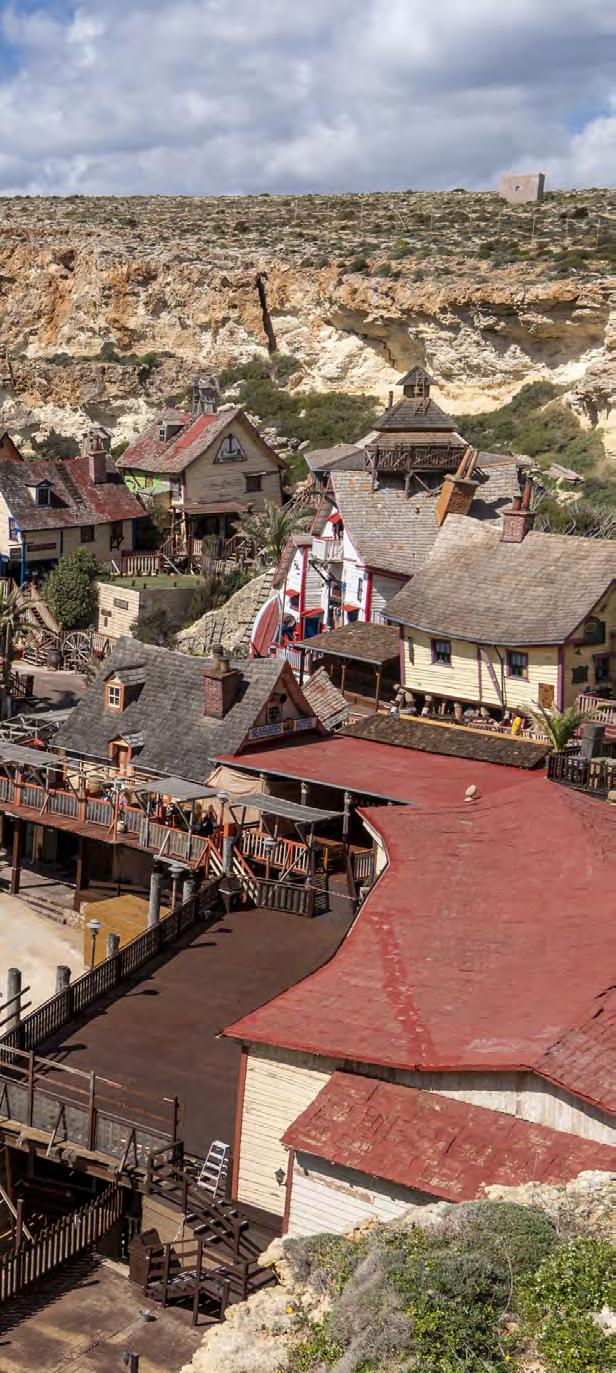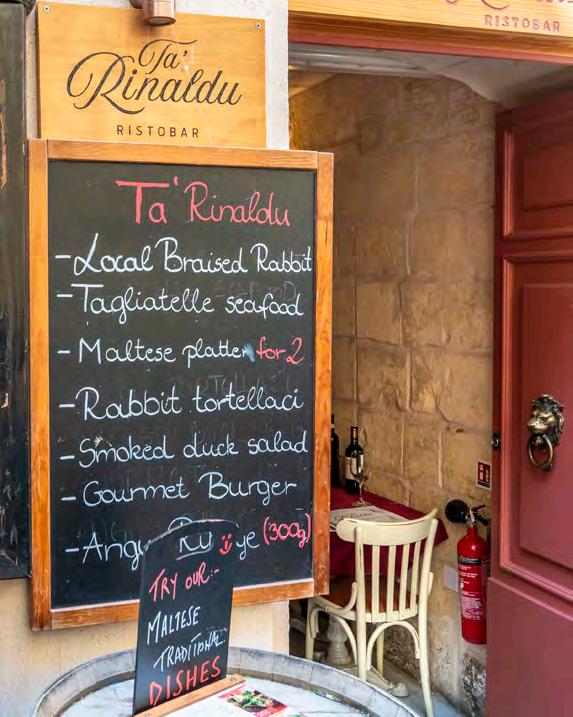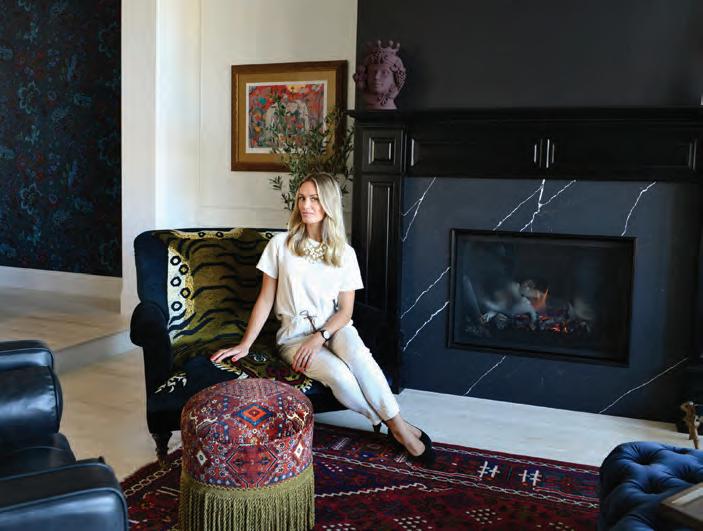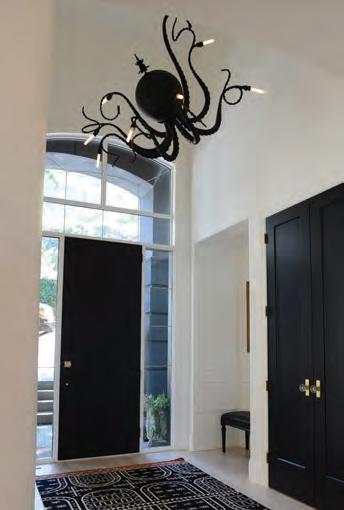
5 minute read
TRAVEL
MALTA
the amazing
Advertisement
This European country has a little bit of everything
WORDS AND PHOTOGRAPHY BRIAN ARGYLE
alta! How interesting.” “M That was my Uncle Ray’s reply, when I emailed to say we were visiting Malta for three weeks. Ray, a prolific author, enjoys spending his down time visiting France, surveying the rural countryside while acquainting himself with local varietals of fermented grapes. So, let me explain... While investigating travel packages online, my wife Maureen stumbled upon a long-stay holiday in Malta. Previously, we had taken one to Portugal and thoroughly enjoyed ourselves. Curious, we did some research and after talking with friends who had visited Malta on a Mediterranean cruise— and who unanimously declared it was their favourite spot— we decided to see for ourselves. The Republic of Malta is a group of tiny islands south of Sicily. The two main islands, Malta and the much smaller Gozo, have historic sites that predate the great pyramid of Egypt by more than 1,000 years. Because of their strategic location and small size, over the centuries they were seemingly invaded by every civilization that sailed past with a fleet of ships. As time went by, the resulting mix gave rise to a unique Maltese culture, with its own language and customs. Its current population is just under 500,000. Ultimately, that travel package didn’t mesh with our timing, so we arranged our own flights and hotels. We opted for a week on Gozo and a week on Malta, and left the third week open in case we wanted to visit Sicily, just 90 minutes away via fast ferry or 30 minutes by air. But when the time came, we elected to stay in Malta, since there was still much we wanted to see and do. In all, we stayed in four hotels, each in different cities—all interesting and unique. And despite the country’s diminutive size, after three weeks we had nowhere near exhausted the many places to visit. Rising sea levels at the end of the last Ice Age submerged the land bridge between Europe and Africa, leaving the Maltese islands and Sicily above water. In 1798, the Knights of Malta (rulers since 1530) were ousted by Napoleon Bonaparte. The Maltese, distraught by the subsequent raiding of churches and wealthy homes to finance Napoleon’s invasion of Africa, sought help from the British. In 1800, Admiral Horatio Nelson drove out the French and—on the condition the Maltese could retain their language, religion and culture—Malta became a British protectorate, which lasted until 1964. Most Maltese speak fluent English as a second language. An Allied military base, Malta played a key role in the Mediterranean and African campaigns in both world wars. Targeted by the Italians and Germans and under siege in the Second World War, Malta became the most heavily bombed site in Europe. In April 1942, Britain’s King George VI awarded the George Cross to the entire country, “to bear witness to a heroism and a devotion that will long be famous in history.” The Maltese were no strangers to hardship and resolve. One of the most celebrated victories of 16th-century Europe was the Great Siege of Malta, when the island defended itself against the Ottoman Empire. The Turks had mustered previous raids, including in 1551, when a strike


force of 10,000 gave up after a few days, instead turning to invade Gozo, where they carried off the entire island population of 5,000 men, women and children as slaves. In 1565, they returned to Malta with nearly 200 ships and 40,000 men, confident it should take no more than three days to capture the island. Four months later, after firing more than 130,000 cannonballs, losing their commander and nearly their entire force, they left, never to return. Malta had lost a third of its population.
Today, Malta is an independent nation, a member of the European Union but not of NATO. The capital city, Valletta, was chosen Europe’s Capital of Culture in 2018. Its Grand Harbour is one of the largest ports in Europe, often occupied with cruise ships and super yachts of the rich and famous. With a modern international airport and a splendid public transit network, including frequent 25-minute ferries to Gozo, Malta is easy to get to and easy to get around in. Its sunny beaches may not be as grand as some countries’, but the range of activities and things to see are unparalleled, given their proximity.
Visit prehistoric temples or medieval castles, Roman catacombs or underground bomb shelters, and a wealth of museums with priceless artifacts and state-of-the-art multimedia presentations. Shop in rustic craft markets or upscale shops in trendy historic districts and new shopping malls, or visit a casino. There’s even Popeye Village, a film set fishing village built for the 1980 Popeye movie, starring the late Robin Williams, and now a small theme park.
And absolutely reserve some time to visit Gozo. Centuries-old stone farmhouses, now converted to boutique B&Bs, compete with newer international hotels, from budget to luxurious. And of course, there are Airbnbs and Vrbos—pick your accommodation. Whether you’re a history buff, a party-goer

that loves the night life, or someone who likes to walk the countryside or attend yoga retreats, Malta has places ideal for you.
Hungry? Everything from tiny hole-in-the-wall bakeries to gourmet restaurants abound, with choices from traditional Maltese food—a combination of Arabic and Italian—serving salads, seafood, rabbit stew or pizza (pizza is everywhere), to typical English pubs, Hard Rock Cafes and McDonald’s. One thing we noticed was the friendliness of the Maltese and excellent service, whether it was at restaurants or hotels—even the bus drivers were helpful and courteous.
In part due to the short distances involved, we did not rent a car. In Malta they drive on the left, like the British, and given the many older, narrow streets with virtually non-existent parking, buses were a more convenient and less stressful option. We bought Explore Plus passes that got us on all buses as well as the water taxis that run across the harbours to and from Valletta. Buses are everywhere and have free onboard WiFi—as do many public spaces—so with your smartphone you can easily access routes and schedules and see your current position.
With direct flights from major European cities via Air Malta and other carriers, getting to these tiny specks in the middle of the Mediterranean is a breeze. If your timing is flexible, check for special events before booking your flights; things are going on year round. We were there during Carnival week and the running of the Malta Marathon.
I sent Ray some photos when we returned. His comment was, in part, “Clearly, Malta is a fascinating place and you made a good choice.” In retrospect, I believe we did.

Nicole Verbeke,
Owner + Principal Designer
778.212.2553 @copperandoakdesign www.copperandoak.design
Dwell Well.









